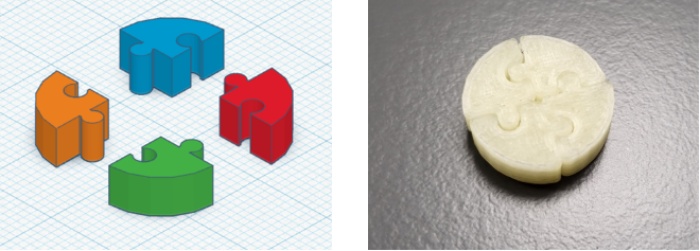Formulation and Delivery - Chemical
Category: Poster Abstract
(T1530-01-05) Personalized Polypill Using a New Flexible 3D Printed Design
Tuesday, October 24, 2023
3:30 PM - 4:30 PM ET
- AF
Ahmed Faheem, Ph.D. (he/him/his)
University of Sunderland
Sunderland, England, United Kingdom - YK
Yasir Karkar (he/him/his)
University of Sunderland
Sunderland, England, United Kingdom
Presenting Author(s)
Main Author(s)
Purpose: This work attempts to formulate an analgesic polypill with a flexible design that can be adjusted on demand responding to patient needs.
Methods: Paracetamol, caffeine and ibuprofen were used as model drugs to prepare the polypill. A polymer mix of PVP 40,000 and Eudragit EPO was employed and drug release from different tablet configurations was tested in buffer and HCl.
Results: Through changing the tablet configuration, it was feasible to control the dose of each of the APIs used.
Conclusion: This design can be a great step towards personalized medication by using its units in the community pharmacy setting to meet patient needs through the flexibility in changing drugs and doses available to the patient. Additionally, this design can be used to control drug release by using immediate and modified release units interchangeably.
References: 1. Tan, D.K., M. Maniruzzaman, and A. Nokhodchi, Advanced pharmaceutical applications of hot-melt extrusion coupled with fused deposition modelling (FDM) 3D printing for personalised drug delivery. Pharmaceutics, 2018. 10(4): p. 203.
2. Sadia, M., et al., From ‘fixed dose combinations’ to ‘a dynamic dose combiner’: 3D printed bi-layer antihypertensive tablets. European Journal of Pharmaceutical Sciences, 2018. 123: p. 484-494.
 Flexible-pill design and Flexible-pill tablet after printing.
Flexible-pill design and Flexible-pill tablet after printing.